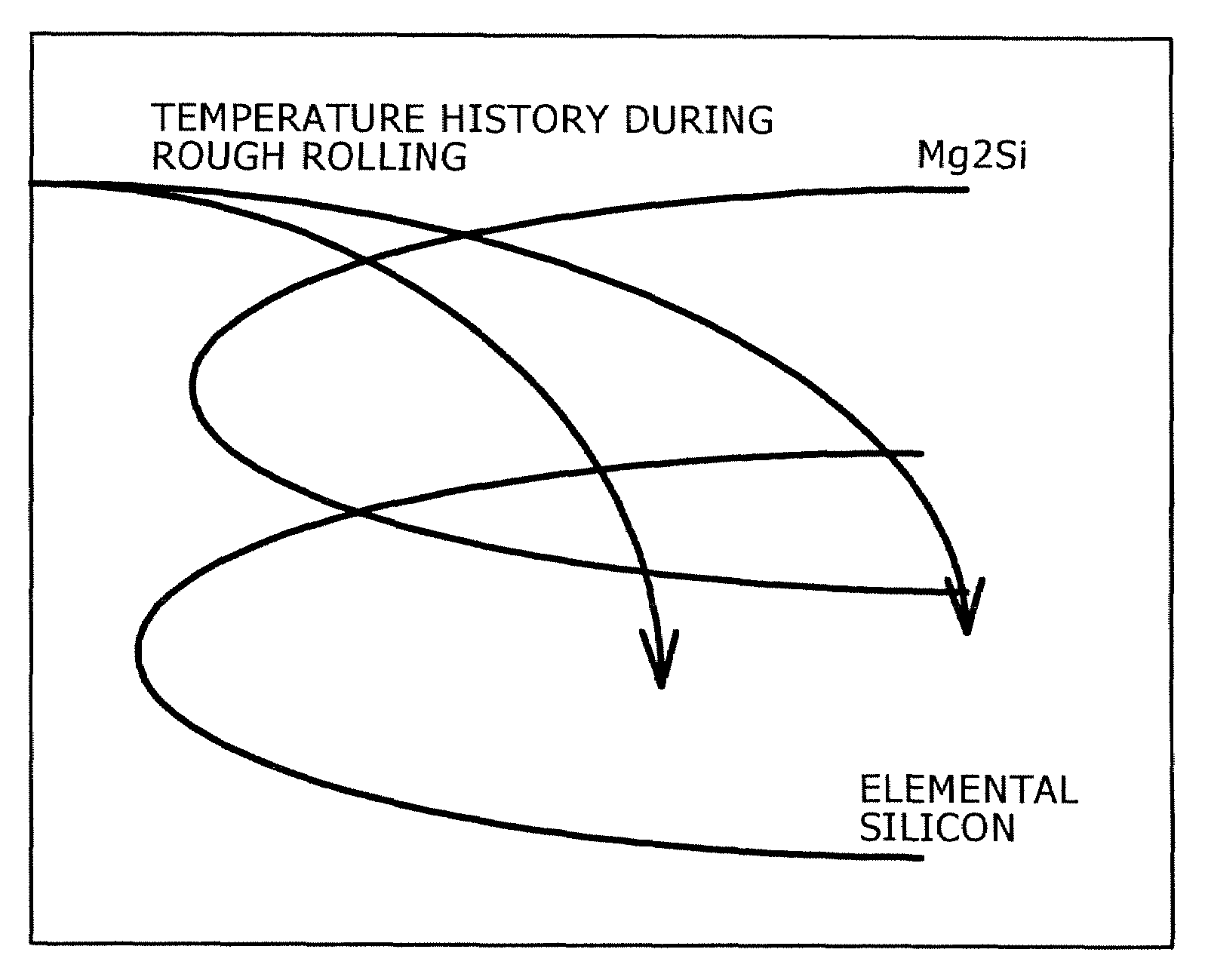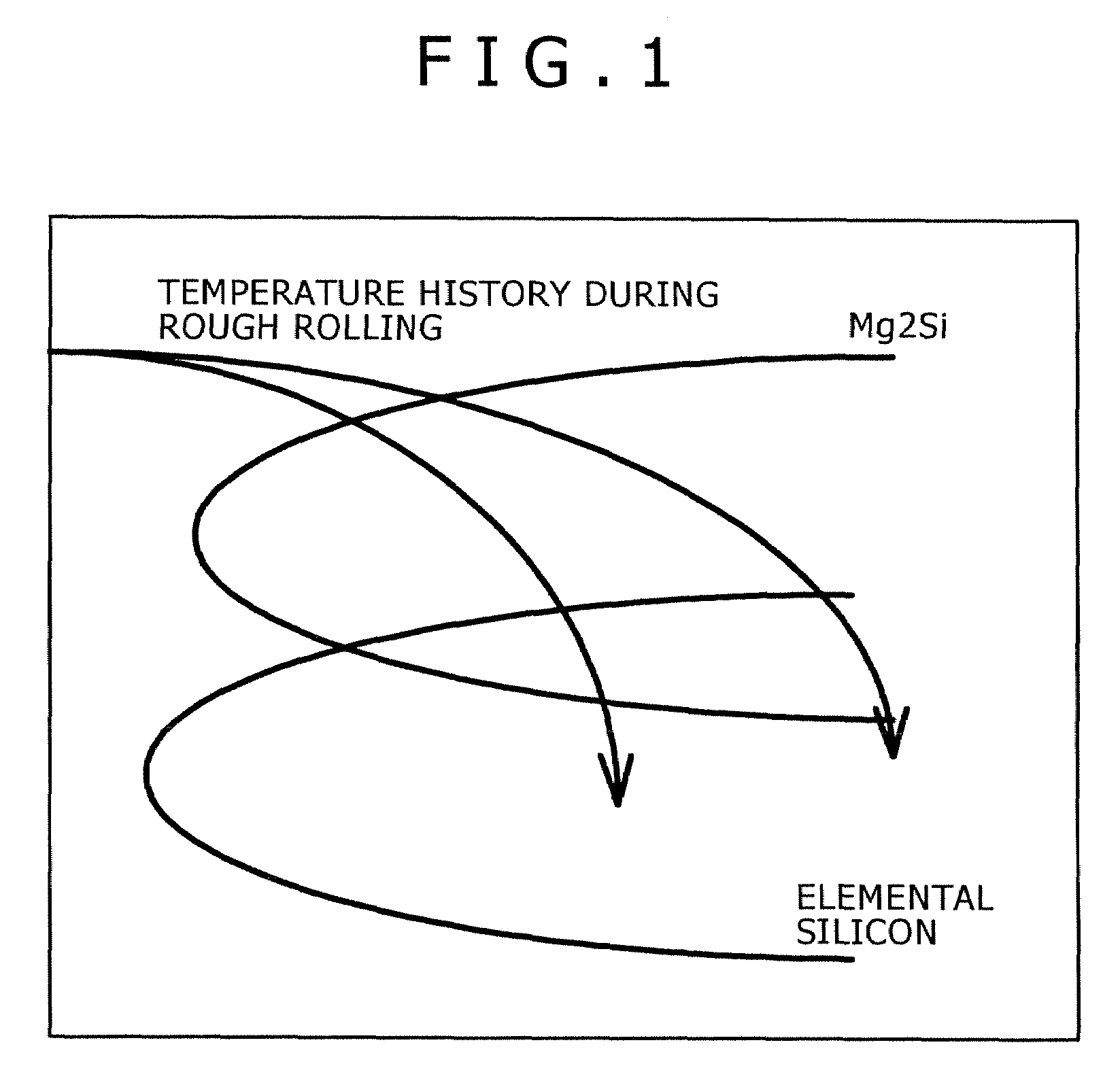Aluminum alloy sheet
a technology of alloy sheets and aluminum alloys, applied in the field of aluminum alloy sheets, can solve the problems of increased cost and productivity decline, and achieve the effect of excellent room temperature stability and resistance to deterioration in properties
- Summary
- Abstract
- Description
- Claims
- Application Information
AI Technical Summary
Benefits of technology
Problems solved by technology
Method used
Image
Examples
experimental example
[0101]Ingots of aluminum alloys were homogenized, hot-rolled, cold-rolled, subjected to a solution heat treatment and a quenching treatment under conditions shown in Table 2, and thereby yielded 6000 series aluminum alloy sheets having compositions A to M shown in Table 1. The symbol “−” in the contents of respective elements in Table 1 means that the content in question is below the detection limit.
[0102]The detailed production conditions of the aluminum alloy sheets are as follows. Specifically, ingots of aluminum alloys having compositions shown in Table 1 and having a thickness of 500 mm, a width of 2000 mm, and a length of 7 m were cast according to DC casting. These ingots were subjected to a double homogenization, except for apart thereof (Sample No. 10). Sample No. 10 was subjected to a single homogenization at 550° C. for 4 hours, and rough rolling in hot rolling was started at this temperature immediately after the homogenization without cooling.
[0103]In the double homogen...
PUM
| Property | Measurement | Unit |
|---|---|---|
| temperature | aaaaa | aaaaa |
| temperature | aaaaa | aaaaa |
| yield strength | aaaaa | aaaaa |
Abstract
Description
Claims
Application Information
 Login to View More
Login to View More - R&D
- Intellectual Property
- Life Sciences
- Materials
- Tech Scout
- Unparalleled Data Quality
- Higher Quality Content
- 60% Fewer Hallucinations
Browse by: Latest US Patents, China's latest patents, Technical Efficacy Thesaurus, Application Domain, Technology Topic, Popular Technical Reports.
© 2025 PatSnap. All rights reserved.Legal|Privacy policy|Modern Slavery Act Transparency Statement|Sitemap|About US| Contact US: help@patsnap.com


